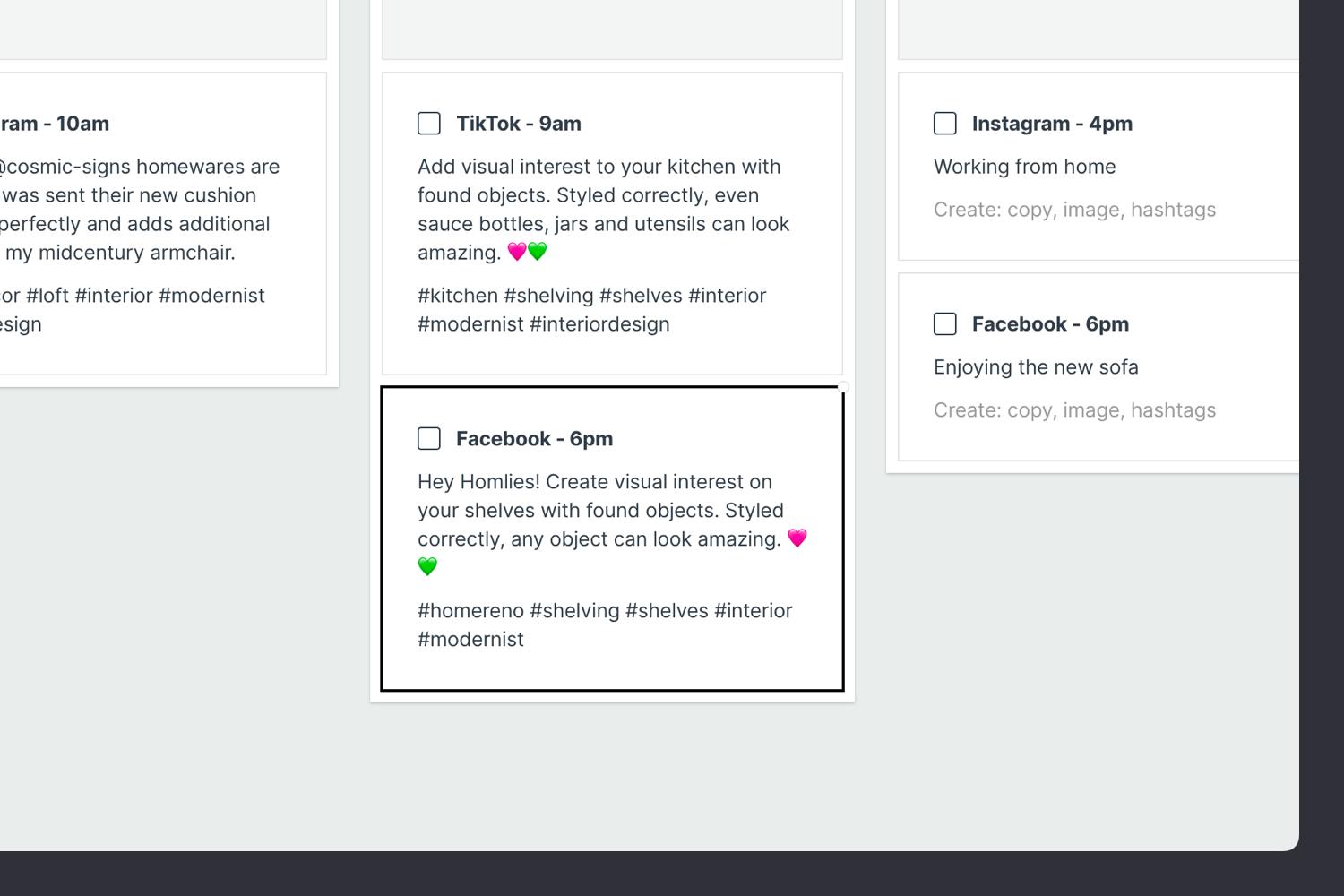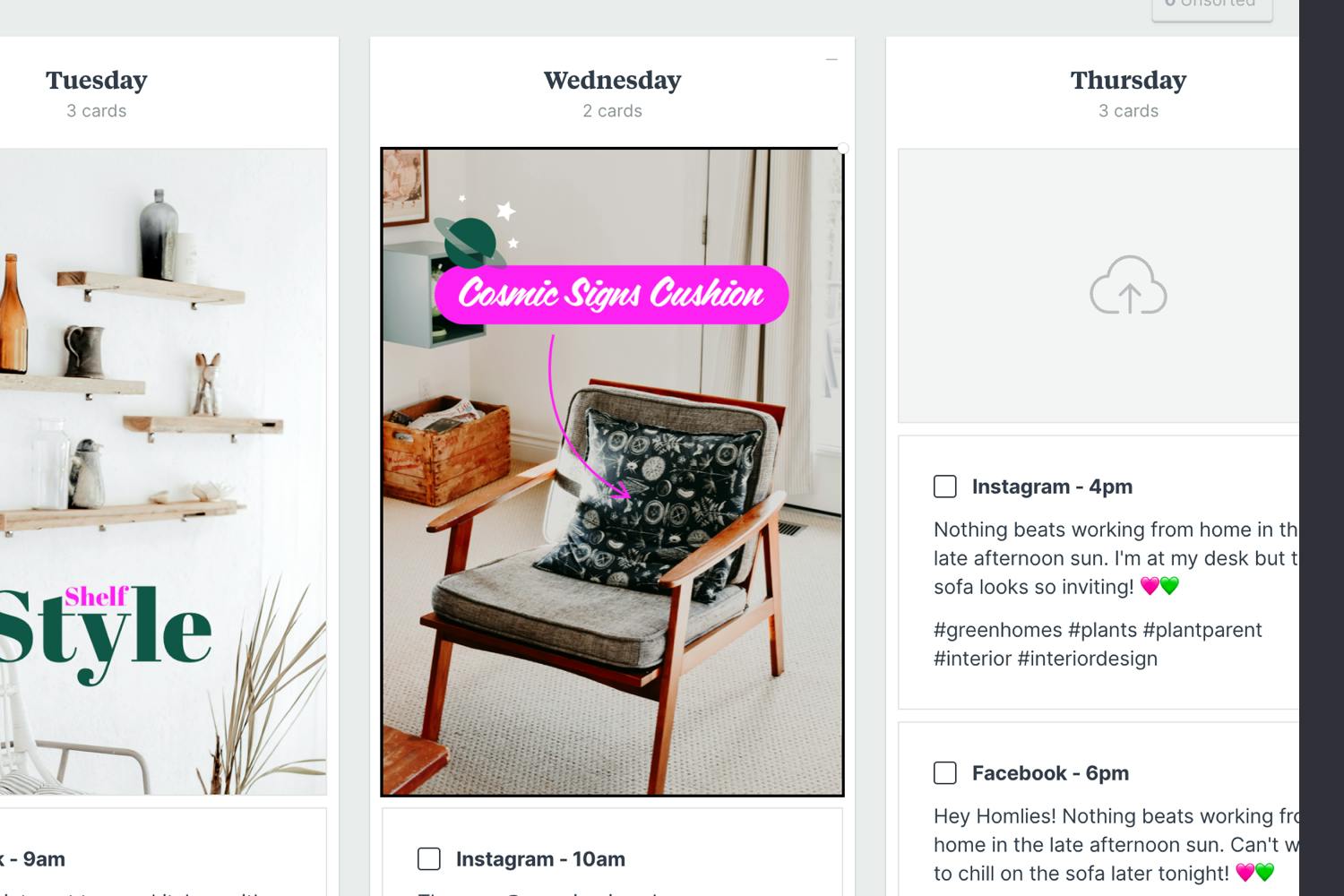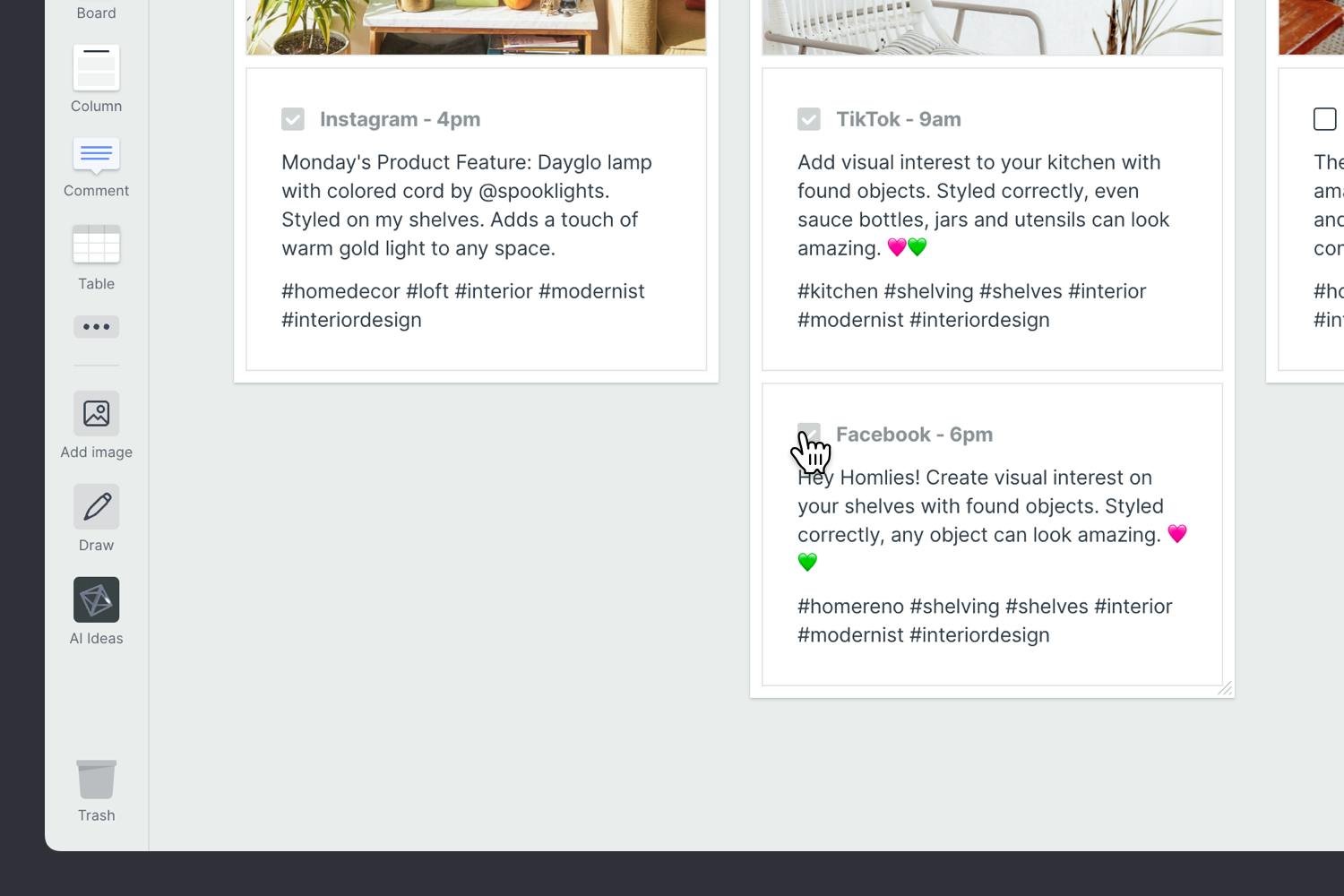A social media calendar is a planning tool used by individuals, marketers or businesses to organize and schedule their social media content in advance. It helps to maintain a consistent and cohesive presence across various social media platforms.
Social media calendars can be easily shared and accessed by multiple team members and they provide a historical record of your social media activities, making it easier to review and post content on a regular basis.
In this simple guide, you'll learn the modern approach to creating a social media calendar using Milanote. A free and flexible planning tool used by top creatives.
This template is part of the Marketers collection.








